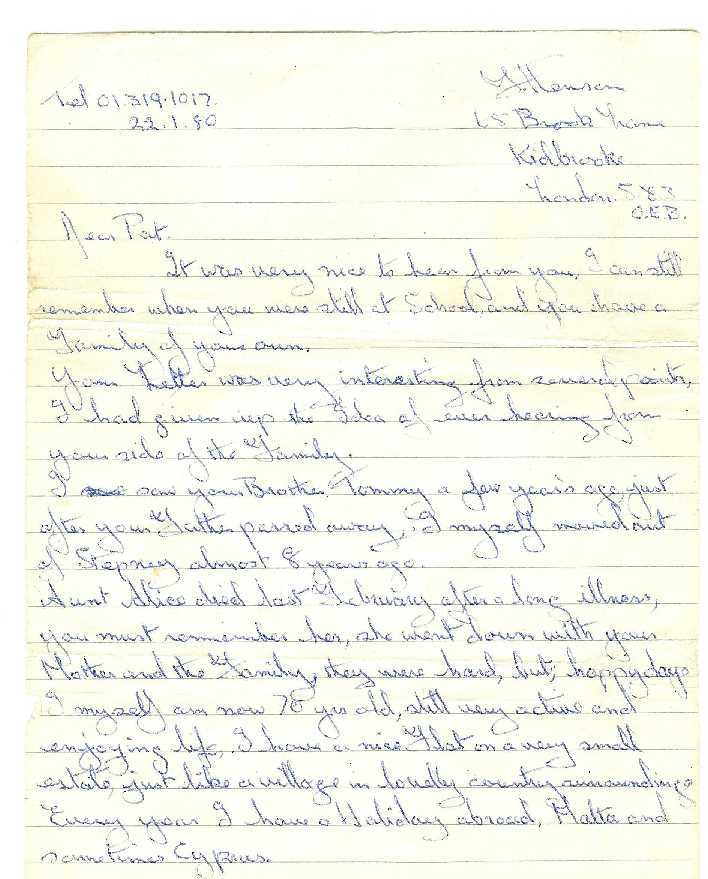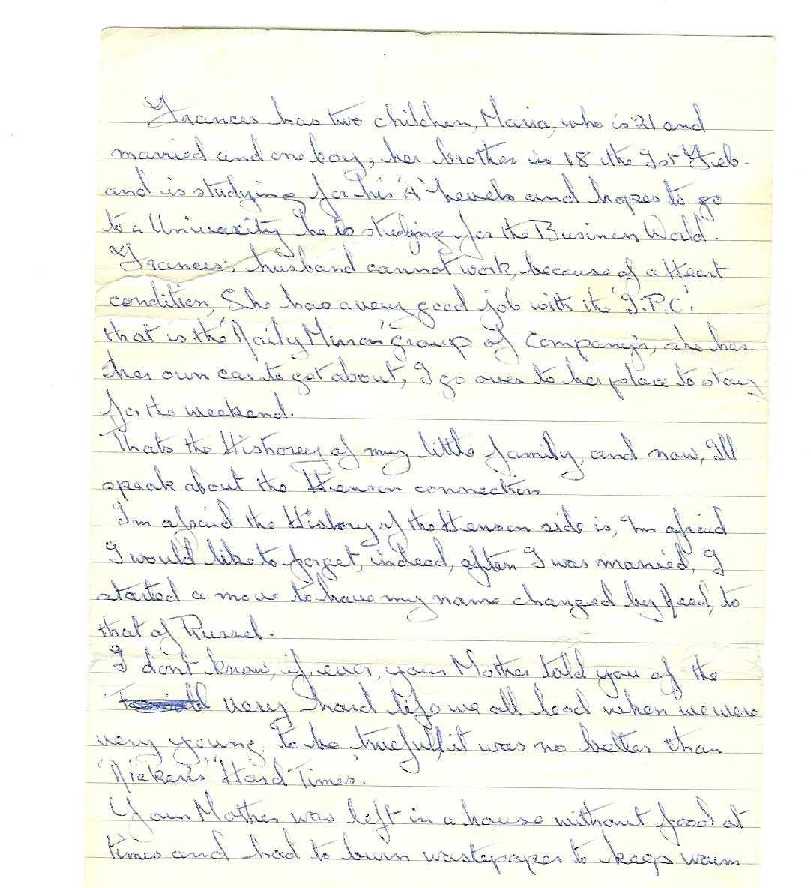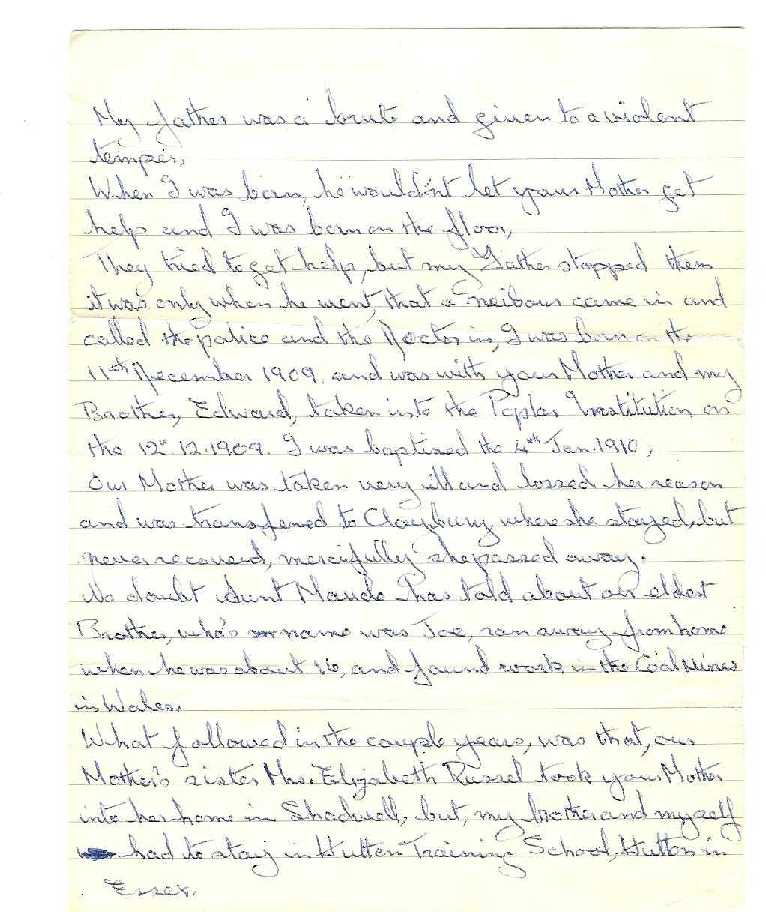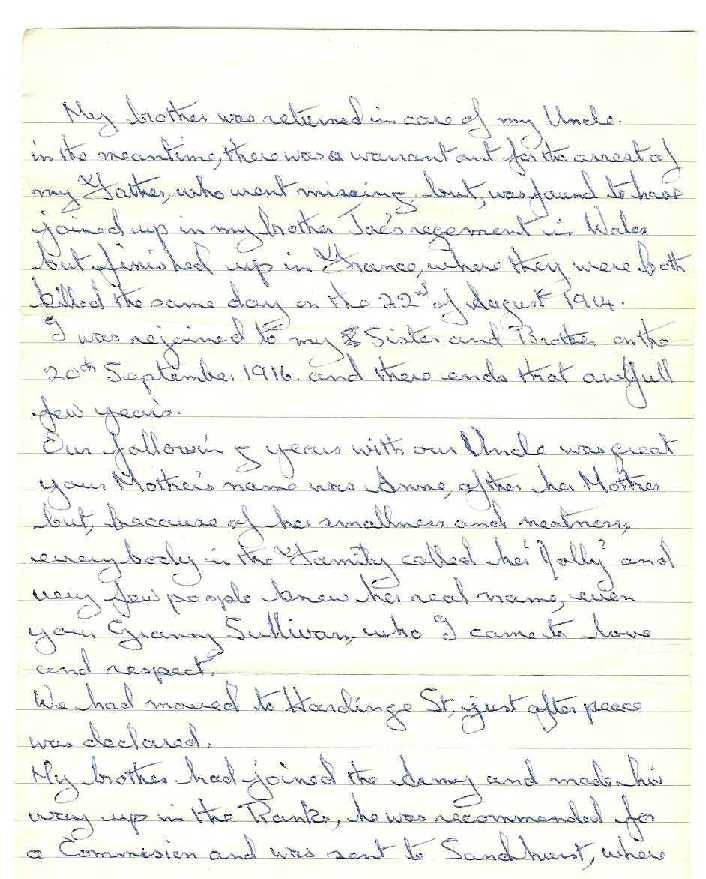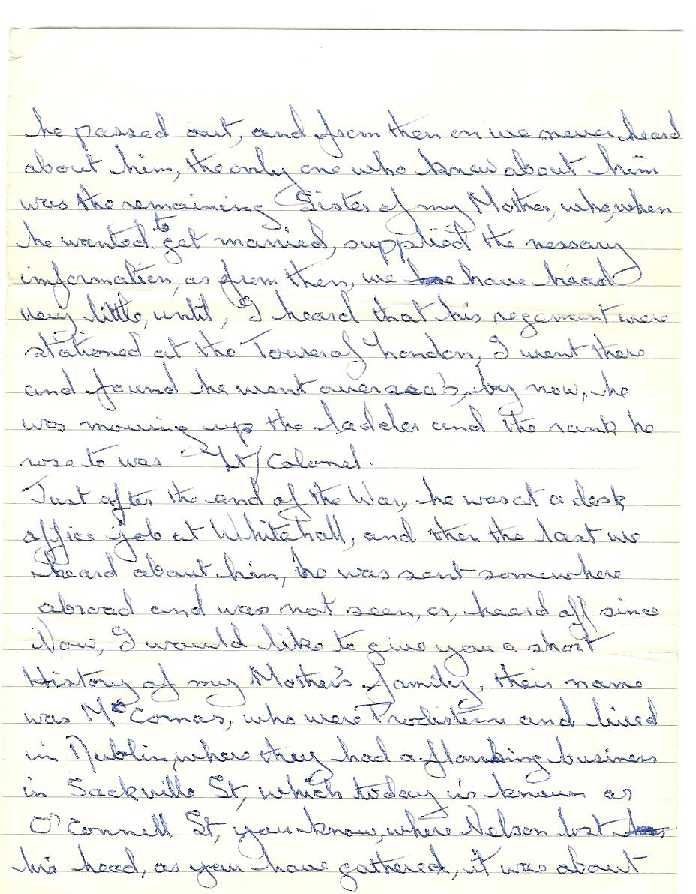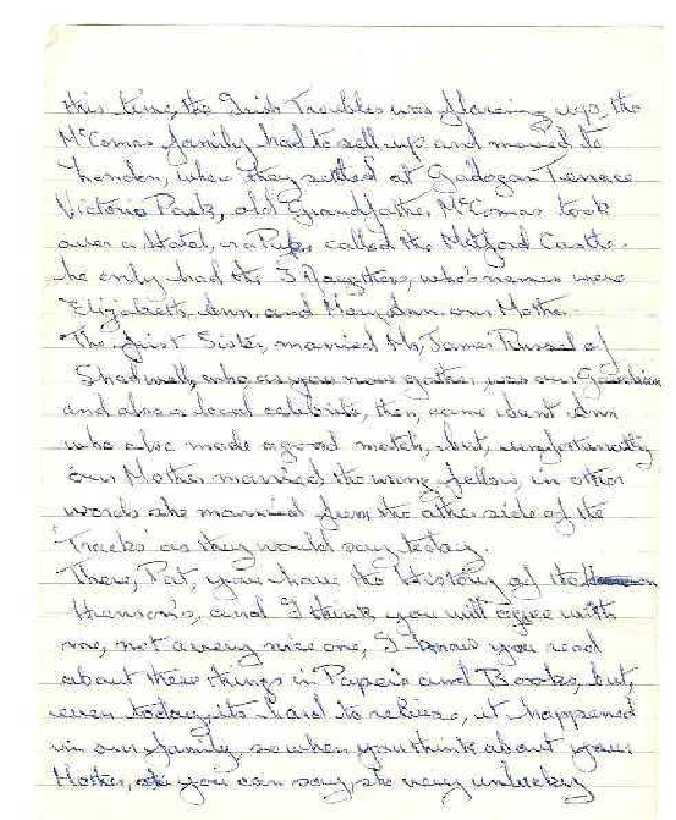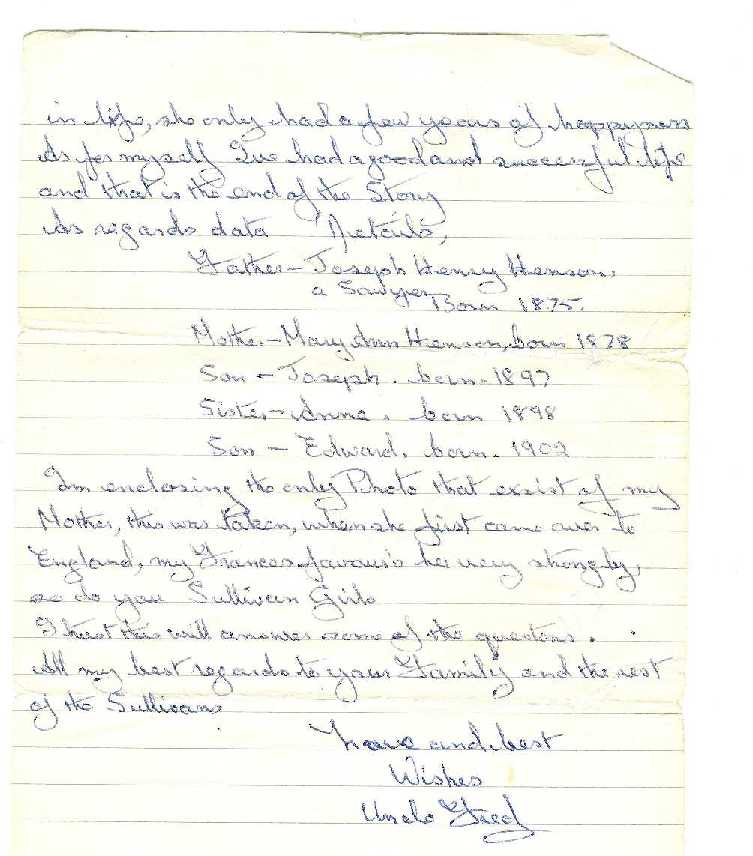Tags
I have traced the Henson lineage back to Robert Henson or Hinson who was born in Silverstone, Northamptonshire in about 1725. The family lives in various villages along what is now the A5 between Towcester and Milton Keynes until William Arthur Henson, born in 1847 in Cosgrove, moved to London. He married Elizabeth Vaughan in Potterspury in December 1873 and the following year their son William Samuel was born in Stepney.
By 1881 the family were living at 9A Lefevre Road, Bow and William was working as a sawyer in the building trade. William Samuel was at this point living back in Stony Stratford with Elizabeth’s parents, but their second son Joseph Henry was with them in Bow. Another son, Walter Vaughan Henson, was born in 1882, and the family remained in Bow for the rest of William’s life.
It was the second son, Joseph Henry Henson, born in Bow in 1875, who married Mary Anne McComas (see McComas Family). Joseph was clearly brought up to follow his father’s trade, listed as a ‘sawyer’s errand boy’ on the 1891 census when he was 14. On 13th September 1896 the wedding took place at St Mark’s Church, Victoria Park – possibly the nearest the McComas family got to the fabled Mitford Castle pub as both it and the church were in Cadogan Terrace. Maybe they had their wedding reception there?
Over the next few years their five children were born: Joseph Frederick in 1897, Annie Eliza in 1898, Robert James in 1900 (he lived less than a year), Edward in 1902 and Frederick in 1909. In 1901 Joseph Henry is still listed as working as a sawyer, but clearly the family then fell on hard times and according to a letter written by his youngest son Frederick, Mary Anne Henson nee McComas suffered greatly from the actions of her husband.
Frederick’s letter of 1980 written to his niece Pat Bridgeman (nee Sullivan) gives a detailed account of the Henson family troubles – their daughter Annie Eliza later married Thomas Sullivan, and probably never told her own children about her early life – something she would rather forget about, I imagine. I am attaching the letter itself to this blog, but a few quotations are enough to give a flavour of the subject matter.
Frederick says that the family’s life was ‘no better than Dickens’ ‘Hard Times’….Your mother was left in a house with no food at times and had to burn waste paper to keep warm….my father was a brute and given to violent temper….When I was born he wouldn’t let your mother get help and I was born on the floor.’ Finally the children called the naighbours when their father left the house and they were taken into care – which in those days meant the workhouse. Mary Anne was very ill following the birth and ‘lost her reason’, being admitted to Claybury Mental Institution where ‘she stayed but never recovered and mercifully passed away’.
In fact, records she she was admitted to Claybury on 13th December 1906, and discharged, ‘recovered’ on 7th February 1907, two years before Frederick was born. She was admitted to the Poplar Union Workhouse on 13th December 1909 with 2-day old Frederick, and did die in the same month, presumably in the same workhouse. Meanwhile her son Edward was placed in a different workhouse and Annie Eliza is recorded as ‘at school’ -presumably fending for herself.
Frederick’s letter continues to explain that the eldest son Joseph (Joe) ran away from home aged 16 finding work in Wales in coal mines, while he (Frederick) and his brother Edward were sent to Hutton Training School in Essex. This residential school had been opened in 1905 in Hutton neat Brentwood to house destitute children of Poplar. Records show that on 7th April 1914, Edward and Frederick were transferred from the registers of Stepney to Poplar under the Poor Law Removal and Settlement Act, as their father was a Poplar resident – he was recorded on this document as absent. Annie meanwhile was taken in a looked after by their aunt, Elizabeth Russell nee McComas.
His brother Edward was returned to the care of their uncle and a warrant was issued for the arrest of their father, who was found to have absconded to Wales where he apparently joined the same regiment as his eldest son Joe. He states they were both killed in France on the same day, 22nd August 1914. Records however seem to indicate that Joseph senior died on 9th July 1916 and his son Joseph Frederick died the following day at the Somme.
The siblings were reunited on 20th September 1916, and Frederick clearly adored his sister Annie, or Dolly as they all called her as she was of small build. The family moved to Hardinge Street, Stepney just after World War I, while he says Edward stayed in the army and made his way up the ranks. The 1939 census however has an Edward Henson with what appears the correct birthdate working as a drill machinist for metal window fittings and living with his wife Nora in Witham, Essex….as so often, what families pass on to each other on the basis of verbal information is not always totally accurate – it was Frederick for instance who gave the McComas family the Mitford Castle pub. Sometimes we have to accept we are never going to know for certain what happened – nevertheless, the Henson family saga is worth recording as part of the family’s history.
And happily, Annie (or Dolly) appears to have been very happy in her marriage to Thomas Sullivan which produced nine children, the eldest of whom was Chris’s dad Joe.
